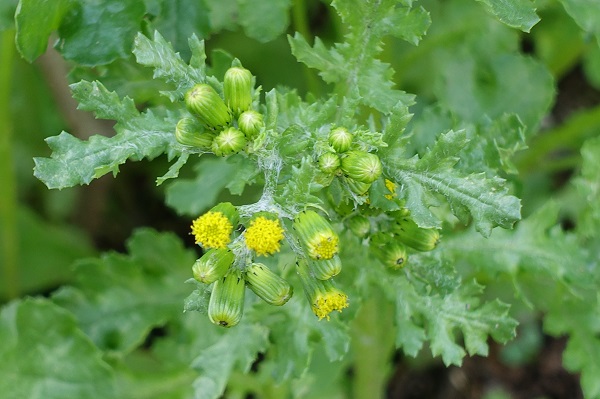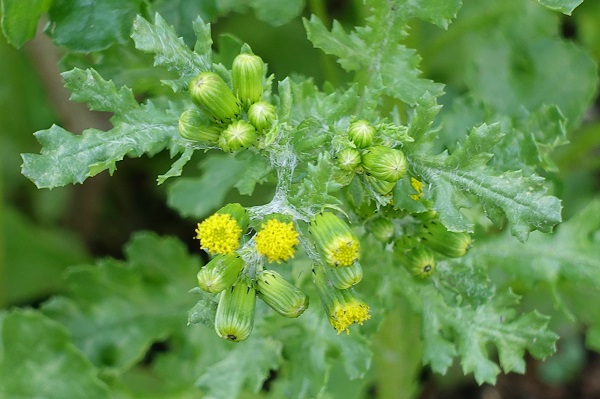|
|
| Life form: |
| Annual herb |
| Stems: |
| Height 10-40cm, stem succulent, hollow, slightly angled, branched, thickish, erect or ascending |
| Leaves: |
| Alternate, pinnately lobed |
| Flowers: |
| Cylinder shaped rayless yellow flower heads |
| Flowering Period: |
| March-November |
| Fruits: |
| Achenes, brownish and hairy |
| Habitat: |
| Arable land, yards, gardens, flower beds, heaps of earth, wasteland, roadsides, sea-shores |
| Distribution: |
| Throughout the country |

Derivation of the botanical name:
Senecio, from senex, old man, referring to the gray hairs on the seeds.
vulgaris, common.
- The standard author abbreviation L. is used to indicate Carl Linnaeus (1707 – 1778), a Swedish botanist, physician, and zoologist, the father of modern taxonomy.
- The standard author abbreviation Dumort is used to indicate Barthélemy Charles Joseph Dumortier (1797 - 1878), a Belgian who conducted a parallel career of botanist and Member of Parliament.
- The standard author abbreviation W.D.J.Koch is used to indicate Wilhelm Daniel Joseph Koch (1771 - 1849) , a German physician and botanist.


|




